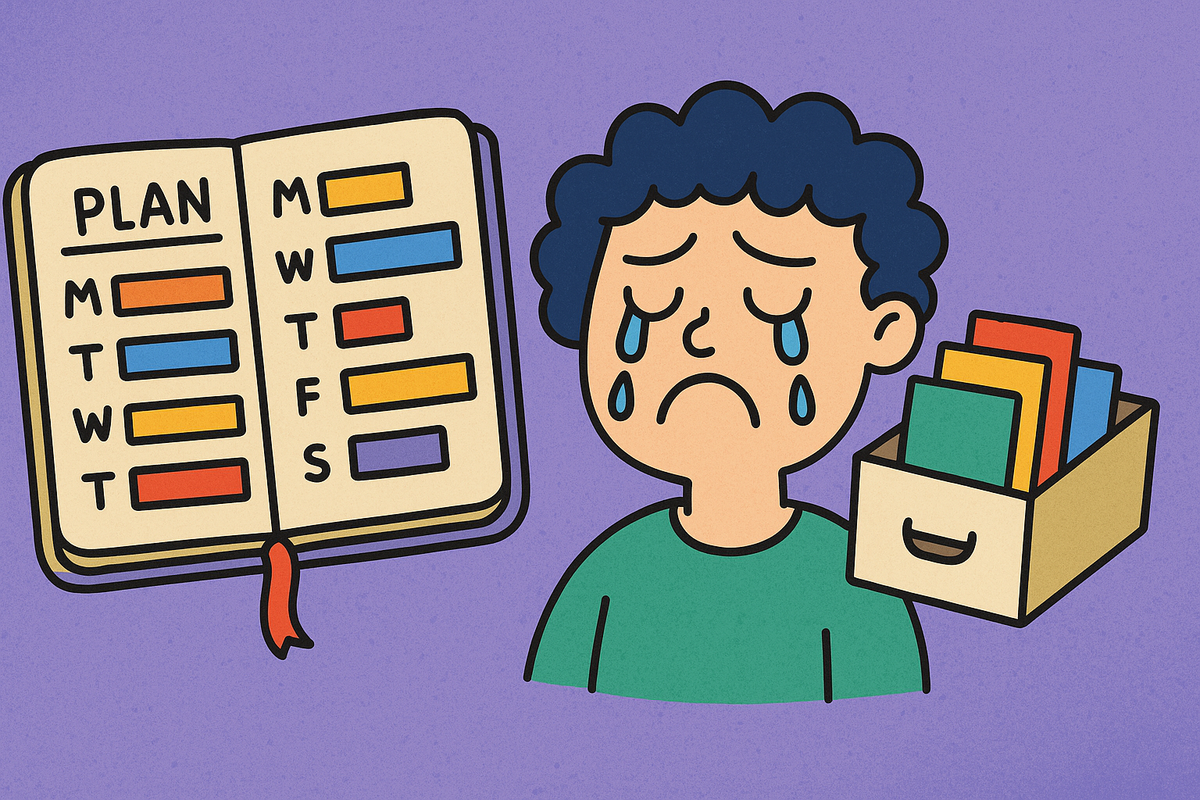Why Traditional Planners Never Worked for My ADHD Brain (And What Finally Did)

If you’ve ever bought a beautiful planner, filled out two pages, then let it die in a drawer… same.
For a long time, I thought I just lacked discipline. I’d look at my half-used planner and think, If I could just stick with it, I’d finally get my life together.
But here’s the thing: traditional planners aren’t made for ADHD brains. They’re made for people who already think in time blocks and love filling out pages of goals.
That’s not how my brain works — and maybe not yours either.
The ADHD Planner Cycle of Doom
Here’s how it usually goes:
- You buy the planner with hope and good intentions
- You fill it out like it’s going to solve your entire life
- You forget about it for three days
- You feel guilty and stop using it altogether
- You repeat this cycle every January. Sound familiar?
Why Most Planners Fail People With ADHD
It’s not just about willpower. Here’s why traditional planners tend to crash and burn for us:
- Too rigid – Blocks of time feel suffocating, not motivating
- Overwhelming layouts – Too many steps, boxes, trackers, and pages
- Perfection pressure – One messy week feels like total failure
- Out of sight = out of mind – Unless it’s literally in our face, we forget it exists
The problem isn’t the planner. It’s the format. It assumes a level of executive function we’re not always working with.
What Finally Worked for Me
I stopped trying to make planners work and instead built a few ADHD-friendly planning habits that feel lighter and more flexible.
1. Sticky note priorities – Each morning, I write three things max on a sticky note and stick it to my laptop or phone. That’s the plan. That’s it.
2. The Focus Menu – Instead of one to-do list, I keep a menu of task types: Quick Wins, Creative Tasks, Admin Garbage. I choose based on my energy level.
3. Weekly reset, not daily grind – I do a loose check-in once a week, not every day. If I miss a day (or four), I haven’t “failed.” I just pick it up again.
The Planner Isn’t the Problem — The Pressure Is
If you’ve felt like a failure because you couldn’t stick to a planner, you’re not alone. And you’re not lazy.
You’re using tools designed for a different operating system.
You don’t need more structure. You need the right amount of structure — and permission to do things your way.




